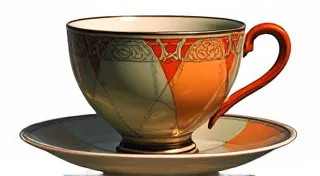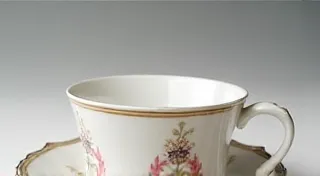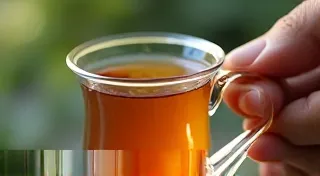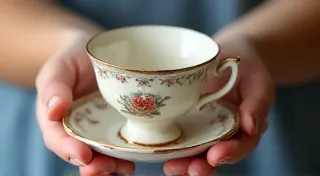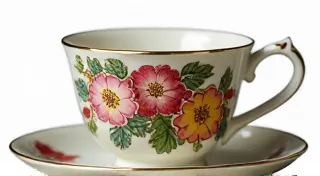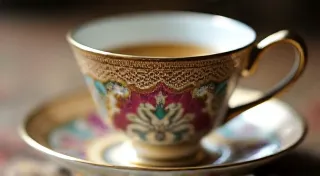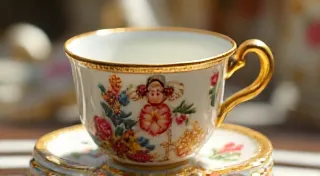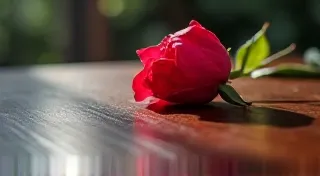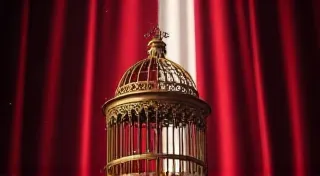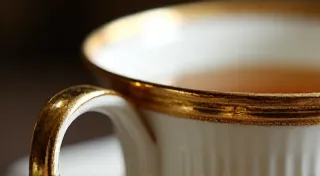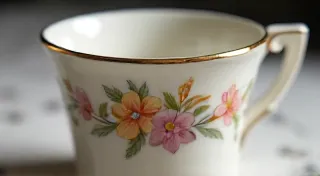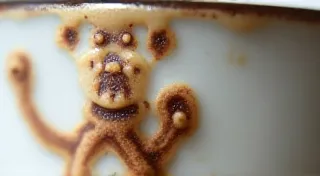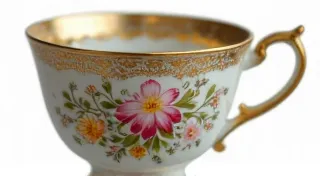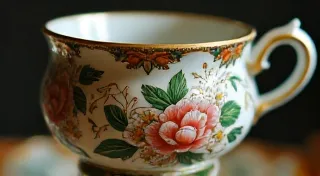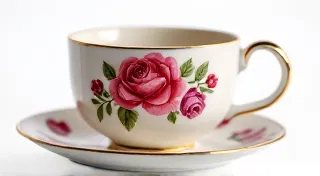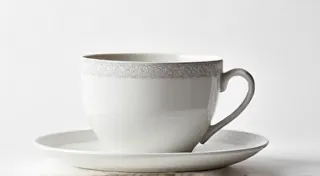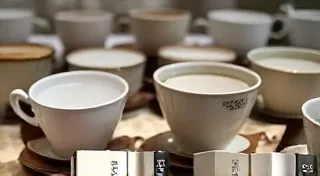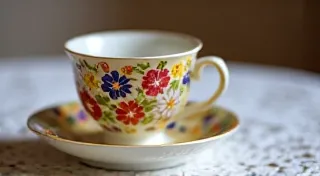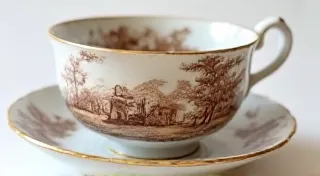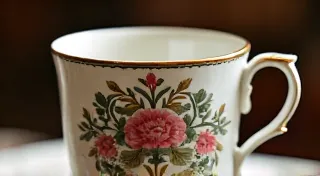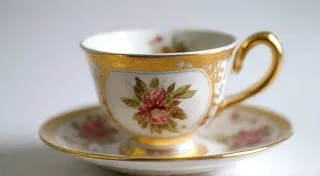Identifying Antique Tea Cups: A Collector's Journey
Welcome to a world of delicate porcelain, intricate designs, and fascinating history. Collecting antique tea cups is more than just acquiring beautiful objects; it’s a journey into the artistry, sentimentality, and industrial heritage of bygone eras. This website is your comprehensive guide to navigating that world, providing insights and resources for both novice and seasoned collectors.
Whether you're captivated by the elegance of china patterns, intrigued by the stories behind manufacturers, or simply appreciate the exquisite craftsmanship of these tiny treasures, you've come to the right place. We're here to help you unravel the mysteries of antique tea cups, understand their value, and deepen your appreciation for their enduring appeal.
Delving into the History and Significance of Tea Cups
The history of tea cups is deeply intertwined with the rise of tea itself. Initially, tea was consumed from simple bowls, but as tea became increasingly popular, especially in Europe during the 17th and 18th centuries, dedicated teaware began to develop. From then on, the evolution of tea cup design reflects societal trends, technological advancements, and the artistic movements of each period. A keen understanding of these historical context is crucial when examining collectible china. The Victorian era, in particular, played a monumental role, and "The Gilded Cage: How Victorian Sentimentality Shaped Antique Tea Cup Design & Value" explores this fascinating period in detail.
Understanding Materials: Bone China vs. Porcelain
Before you even begin identifying specific patterns or manufacturers, it’s essential to understand the material from which your tea cup is made. Is it delicate bone china or more robust porcelain? The distinction is significant, both aesthetically and historically. "Bone China vs. Porcelain: Understanding the Material of Your Tea Cup" provides a detailed explanation of the differences, including how to recognize them. Bone china, a uniquely British invention, contains bone ash, giving it its characteristic translucency and strength.
Decoding Hallmarks: Your Key to Identification
One of the most crucial skills for any collector is the ability to decode hallmarks. These tiny markings, often found on the base of a tea cup, hold vital clues to its manufacturer, production date, and sometimes even the pattern name. “Decoding Hallmarks: Your Guide to Identifying Antique Tea Cup Manufacturers” serves as your essential reference guide. From the elegant script of 18th-century marks to the more standardized designs of the 20th century, mastering this skill will unlock a wealth of information. If you encounter unusual or unfamiliar marks, "Lost & Found Marks: Uncommon Tea Cup Manufacturers" might hold the key to identifying them.
Exploring Iconic Manufacturers and Their Styles
Numerous prestigious manufacturers have left their mark on the world of antique tea cups. Let’s take a closer look at some of the most celebrated:
- Minton Tea Cups: Renowned for their innovation and artistic excellence, Minton's pieces represent the pinnacle of English porcelain. "Minton Tea Cups: A Legacy of Excellence" explores their rich history.
- Royal Albert Old Country Roses: Perhaps the most recognizable pattern of all time. "Royal Albert Old Country Roses: Authenticity and Variations" guides you through identifying genuine pieces.
- Spode Tea Cups: A cornerstone of English ceramics. "Spode Tea Cups: A Beginner's Guide to Identification" provides a great starting point.
- Worcester Tea Cups: Discover the history and beauty of Worcester porcelain. "Worcester Tea Cups: History and Identifying Features" offers valuable insights.
- Belleek Tea Cups: Imbued with Irish charm and unique characteristics. "Belleek Tea Cups: Irish Charm and Identifying Characteristics" unveils their secrets.
- The Rise of Coalport: Uncover the fascinating story of this significant manufacturer. "The Rise of Coalport: A History and Identification Guide" takes you on a journey through their legacy.
- Dresden China: Recognize the beauty and identify the marks of this exquisite porcelain. "Dresden China: Recognizing the Beauty and Identifying Marks" offers a detailed guide.
Beyond the Basics: Transferware, Gilding, and Rare Patterns
Identifying a tea cup isn’t always straightforward. Sometimes, it’s the details that matter most. For example:
- Transferware Tea Cups: Many antique tea cups feature scenes transferred onto the porcelain surface. "Transferware Tea Cups: Decoding the Scenes" explains how to interpret these often-historical narratives.
- The Significance of Gilding on Antique Tea Cups: Gilding, the application of gold to the surface of the porcelain, adds a touch of luxury and can be a key indicator of age and value. “The Significance of Gilding on Antique Tea Cups" provides insights into the different techniques and meanings associated with gilding.
- Rare Tea Cup Patterns: Discovering a truly rare tea cup pattern is a collector’s dream. "Rare Tea Cup Patterns: Discovering Treasures" explores some of the most elusive and valuable designs.
Art Deco Elegance
The Art Deco era brought a distinct aesthetic to tea cup design, characterized by geometric shapes, bold colors, and luxurious materials. “Celebrating the Art Deco Tea Cup: Styles and Manufacturers” is a must-read for those fascinated by this elegant and influential period.
The Value of Narrative: Echoes in Porcelain
Collecting antique tea cups is more than just accumulating beautiful objects; it’s about connecting with the past. These delicate pieces are vessels of history, often reflecting the social, economic, and artistic currents of their time. “Echoes in Porcelain: How Collecting Antique Tea Cups Unearths Forgotten Narratives” explores the deeper meaning behind the hunt for these porcelain treasures. "The Cartography of Absence: Mapping the Lost Factories of Collectable China" sheds light on the factories that are no longer with us.
Caring for Your Treasures
Once you're a proud owner of antique tea cups, proper care is essential to preserve their beauty and value. “How to Care for Your Antique Tea Cups” provides practical tips and advice on cleaning, storage, and handling these delicate pieces.
The Influence of Victorian Styles
“The Influence of Victorian Era Styles on Tea Cup Design” examines the specific trends and motifs that shaped the tea cup landscape of the Victorian period.
Getting Started: A Beginner's Guide
New to the world of antique tea cups? “Tea Cup Collecting: A Beginner's Guide” provides a gentle introduction to the hobby, covering the basics of identification, value, and care.
We hope this website serves as your trusted companion on your journey into the captivating world of antique tea cups. Happy collecting!
